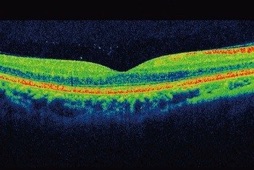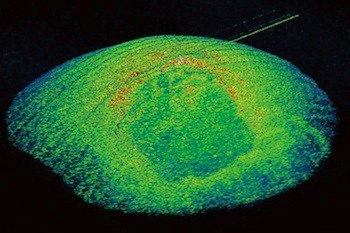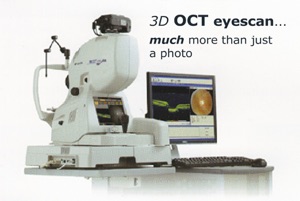OCT Observed Conditions
'Dry' macular degeneration
This type of AMD affects 80% of people with macula degeneration. There is currently no treatment for this condition although vitamin supplements may slow down its progression.
'Wet' macular degeneration
This type of AMD often develops quickly in a matter of a few weeks. Early OCT scanning and referral allows treatment to be undertaken with anti-VEGF therapy drugs such as Lucentis which is injected into the eye.
Glaucoma
Glaucoma damages the nerve fibres of the optic nerve leading to blind spots in the vision. 3D OCT eye scan detects the damage caused by glaucoma by measuring the nerve fibre layers in the retina.
DIabetic Retinopathy
All stages of diabetic retinopathy can be detected with 3D OCT eye scan including the earliest stage involving macula oedema.
Floaters
Floaters can often be detected by the 3D OCT eye scan. Sometimes floaters are associated with ‘flashes’ especially if they are caused by posterior vitreous detachment or retinal detachment.
Retinal detachment
The OCT B scan shows a horizontal split in the retinal layers indicating retinal detachment. OCT allows highly accurate assessment of the extent of the condition for surgical purposes



